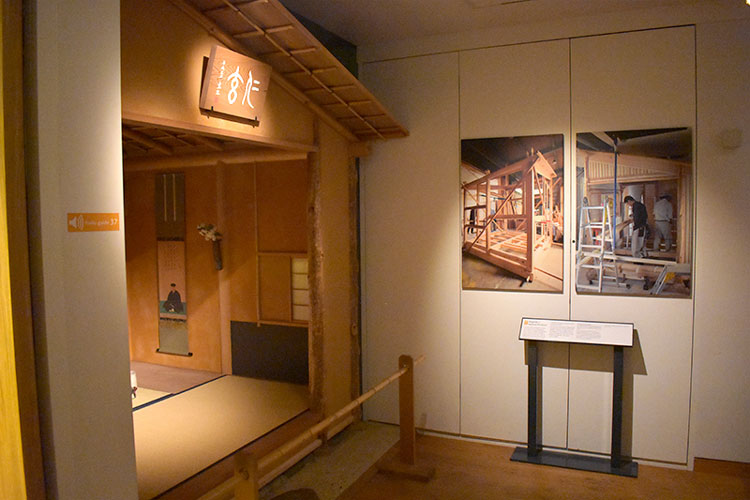Mokume Gane, Japanese Unique Wedding bands and Engagement rings


- 949-629-8174(USA) 81-90-9625-2928(Others)
- english@mokumeganeya.com
Find “Mokume Gane” Chapter 13 : Japan room in the Ashmolean Museum in Oxford
In the previous chapter, we described the pieces that we were able to view during our visit to the Ashmolean Museum, which is the museum of the University of Oxford. There were numerous technically outstanding pieces, such as the tsuba with the three-dimensional chrysanthemum flower pattern. We hope that you were able to get a feel for the beauty of these pieces through the close-up photographs.
The curator of Japanese Art, Dr. Clare Pollard, was kind enough to show us round the storerooms and the exhibition areas also. We would like to focus on these in this chapter.
The storerooms are located in the vicinity of the exhibition areas. In order to preserve the precious pieces so as to transmit them to future generations, it is vital to control the humidity and temperature to protect the pieces from mold and rust, as well as from cracks due to an overly dry environment. For this reason, the pieces are kept separately according to their materials. This is because the ideal temperature and humidity for organic items made of paper or wood and those made of metal are not the same. Even though it would ideally be best to keep tsuba and other sword fittings in separate storage areas from ceramics, they are in fact kept separately in humidity controlled cases.

Cases featuring humidity control labels.

We were not able to visit some of the storeroom areas. Given the sheer number of pieces, Dr. Pollard has not yet been able to catalog everything. The entire collection is not available on the web either, and there may well yet be some undiscovered Mokume Gane pieces, such as fuchi and kashira, among the sword fittings! We left the vaults till later in anticipation of further research.
The Ashmolean Museum features exhibits from all over the world, including a magnificent Japan exhibit.

We mentioned in Chapter 11 that there was a tea ceremony room where tea ceremonies are held once a month. There were explanations on the structure of this tea room on a large panel.
The exquisite construction within a confined space showed off the artistry of the Japanese Sukiya (tea room) construction technique.

Dr. Pollard told us that visitors showed great interest in Japanese culture, and so she made a great effort to provide in-depth explanations of the exhibits. Would they happen to know how an Inro was worn? It was suspended from the obi, using a netsuke to hold it in place. All of this was illustrated so that people could see, with Inro and their netsuke hanging from a bar in the display.



Dr. Pollard also supervises the prints and Japanese paintings and rotates the exhibits once a month. She explained enthusiastically that there is even a corner where visitors can actually take the exhibits into their hands, so that they can familiarize themselves better with Japanese art. After we had spent several hours studying the tsuba, she then graciously guided us through the exhibits until closing time.
This visit helped us understand how much beautiful traditional Japanese artifacts, starting with the Edo period Mokume Gane tsuba, are appreciated and loved by people in other countries.
We at Mokumeganeya will continue our studies on the Mokume Gane pieces that have been handed down from the Edo period, and will strive to continue to transit, not just the pieces themselves, but also these precious techniques.
Mokume Gane Wedding Rings: Reddot & iF Design Award READ MORE >>
Mokume Gane Engagement Rings READ MORE >>
Mokume Gane Wedding Bands READ MORE >>


